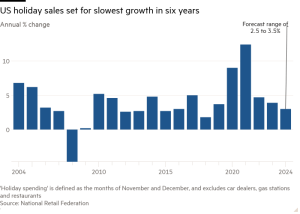Lard almighty! The return of the most misunderstood fat
Unlock the Editor’s Digest for free
Roula Khalaf, Editor of the FT, selects her favourite stories in this weekly newsletter.
A few months ago Paul Burton, charcuterie manager at Westcombe Dairy in Somerset, posted about something he’d been working on for four years. Derived from the “incredible” pigs at Gothelney Farm, whose meat and back fat were already being used with bull-calf meat to make salami, this new product was being rendered from the leftover fat lining the belly, which is known as leaf fat. “Lard is back,” Burton announced of the creamy white substance that would be sold for £8.50 in 400g reusable glass jars.

At first, I was sceptical. Lard has a dire reputation. The great misunderstood fat, it has long been written off as unhealthy and unpalatable. But while many commercially available versions are hydrogenated (to make them more stable), and therefore contain trans fats that adversely affect cholesterol, pure lard actually has some health benefits. It contains very high levels of monounsaturated fats, at up to 48 per cent, which help lower cholesterol. Lard also contains 20 per cent less saturated fat than butter and is a great source of vitamin D. Despite cooks periodically making its case, however, lard has failed to take off in most kitchens. Quality versions are hard to come by. And for the “lardless generation” who never cooked with it, it remains, well, a bit gross.
Burton is hoping to change that and has spent a considerable amount of time refining his version so “it was something I wanted to spread on toast with a sprinkling of salt”, he says. “It’s tricky because the fat contains myriad different saturated and unsaturated fats. But if you get it right, it has a nice texture and mouthfeel and pleasant neutral savouriness that isn’t piggy.”

His advice on how best to use it is uncontroversial: start with roast potatoes. “It has a similar smoking point to goose fat and you end up with the most incredible, light, fluffy potatoes with a glass-like crunchy exterior. Then every dish where you reach for olive oil by default – like sautéing onions to make a soup or casserole – use lard instead. It adds savoury complexity.” Lard is also great for frying eggs, searing steak, adding body and depth to gravies and sauces and deep-frying chips and chicken. Almost nothing crisps better.
Three of the best

Brindisa Ibérico pork fat, £5 for 190g

Borough Broth organic pork fat, £5.83 for 250g

Just Lard, 75p for 250g, waitrose.com
Lard works wonders in pastry, too. Unlike butter, which contains 80-85 per cent fat, lard is 100 per cent fat. It also has a higher melting point. This guarantees lighter, flakier pastry. Nicola Lamb, author of Sift: The Elements of Great Baking (Ebury), considers cannoli the ideal showcase: “They’re crispy, light and rich at the same time.” She advises sticking with butter in puff pastry to retain that buttery taste. But in other bakes, the neutral flavour and enriching qualities of lard mean “you get all those mouthfeel benefits while other ingredients get to shine”. It’s perfect for Portuguese tarts where “you want those crisp layers but because it’s paired with flavourful custard, it doesn’t matter if the pastry doesn’t taste of butter”.
Besides the health and cooking benefits, Burton argues for the value of using lard from a quality source. “If you’ve gone to the trouble of sourcing ethical meat, it makes sense to use a cooking medium with the same values.” Westcombe’s lard was developed out of the wish “not to be wasteful with life” and to use every part of the animal. Other versions include Brindisa’s Ibérico Pork Fat (£5.00 for 190g), made by a ham producer in Extremadura, and Borough Broth’s Pasture-Fed Organic Pork Fat (£5.83 for 250g as part of a bundle).
“The most important thing,” says Burton, “is that people who are skilled at cooking make things out of lard and let people eat them.” On my wishlist are the lardy cakes that pastry chef Anna Higham is looking to introduce at Quince Bakery in Islington, alongside traditional oatcakes and Aberdeen butteries made using lard, and the lard-fried doughnuts in development at Small Food Bakery in Nottingham. I’m keen to try the onions slow-cooked in lard with tomato in friggione, a Bolognese speciality served with pasta at Manteca in Shoreditch, where you can also get a fried pastry made with lard known as gnocco fritto. But nothing rivals the signature dessert at Nuno Mendes’ Lisboeta in Charlotte Street: a pork-fat custard with port caramel known as Abade de Priscos, which is airy, rich and intoxicating. If that doesn’t convert you, nothing will.
@ajesh34
#Lard #almighty #return #misunderstood #fat






